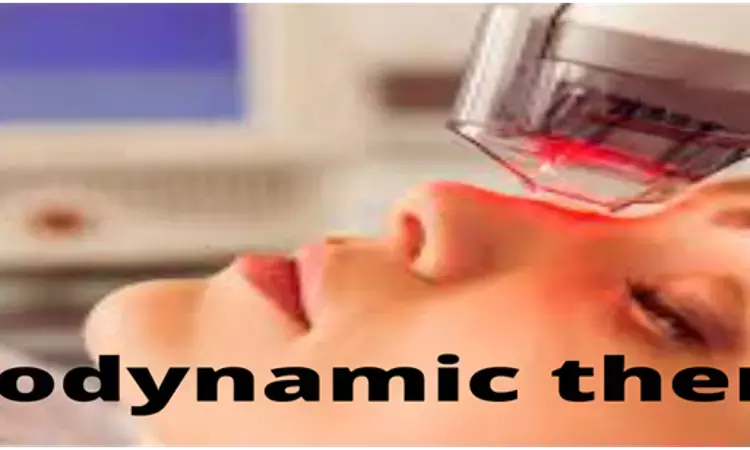- Home
- Medical news & Guidelines
- Anesthesiology
- Cardiology and CTVS
- Critical Care
- Dentistry
- Dermatology
- Diabetes and Endocrinology
- ENT
- Gastroenterology
- Medicine
- Nephrology
- Neurology
- Obstretics-Gynaecology
- Oncology
- Ophthalmology
- Orthopaedics
- Pediatrics-Neonatology
- Psychiatry
- Pulmonology
- Radiology
- Surgery
- Urology
- Laboratory Medicine
- Diet
- Nursing
- Paramedical
- Physiotherapy
- Health news
- Fact Check
- Bone Health Fact Check
- Brain Health Fact Check
- Cancer Related Fact Check
- Child Care Fact Check
- Dental and oral health fact check
- Diabetes and metabolic health fact check
- Diet and Nutrition Fact Check
- Eye and ENT Care Fact Check
- Fitness fact check
- Gut health fact check
- Heart health fact check
- Kidney health fact check
- Medical education fact check
- Men's health fact check
- Respiratory fact check
- Skin and hair care fact check
- Vaccine and Immunization fact check
- Women's health fact check
- AYUSH
- State News
- Andaman and Nicobar Islands
- Andhra Pradesh
- Arunachal Pradesh
- Assam
- Bihar
- Chandigarh
- Chattisgarh
- Dadra and Nagar Haveli
- Daman and Diu
- Delhi
- Goa
- Gujarat
- Haryana
- Himachal Pradesh
- Jammu & Kashmir
- Jharkhand
- Karnataka
- Kerala
- Ladakh
- Lakshadweep
- Madhya Pradesh
- Maharashtra
- Manipur
- Meghalaya
- Mizoram
- Nagaland
- Odisha
- Puducherry
- Punjab
- Rajasthan
- Sikkim
- Tamil Nadu
- Telangana
- Tripura
- Uttar Pradesh
- Uttrakhand
- West Bengal
- Medical Education
- Industry
Photodynamic therapy, an effective cure for Bowen's disease: Meta - analysis

CHINA: Photodynamic therapy (PDT) is more effective than other options like 5-fluorouracil and cryotherapy for the treatment of Bowen's disease (BD) confirms a systematic review and meta‐analysis data published in Dermatology.
Photodynamic therapy is an established, first-line treatment option for Bowen's disease (squamous cell carcinoma in situ.) an early and curable form of skin cancer. PDT involves light and a photosensitizing chemical substance, used in conjunction with molecular oxygen to elicit cell death.PDT is a powerful tool in the localized and selective treatment of dermatologic diseases. In recent years the off-label use of PDT has also escalated.
Xue W., the First Hospital of Shanxi Medical University, China, and colleagues conducted a study with the aim of systematically reviewing and meta-analyze data on the effectiveness of PDT in BD and further summarising the data from all randomized controlled trials (RCTs).
Researchers extracted relevant trial data that met inclusion criteria after conducting a literature search from PubMed, EMBASE, Web of Science, and Cochrane Library databases, and meta-analyses of the data were performed using RevMan V.5.4. The Cochrane Collaboration's risk of bias tools was used to estimate the risk of bias. Complete response rate, recurrence, pain/visual analog scale score, cosmetic outcome, and adverse events were considered as outcomes. Of the 2,439 records initially retrieved, 8 randomized controlled trials were included in this meta-analysis.
Key findings of the analysis are,
•PDT exhibited a significantly higher complete response rate, less recurrence, and better cosmetic outcome compared with other treatments.
•A significant difference was seen between the complete response rate of PDT combined with ablative fractional CO2 laser and that of PDT alone.
•PDT combined with ablative fractional CO2 laser or plum-blossom needle also showed significantly less recurrence and a lower visual analog scale score than PDT alone.
•There was no significant difference in the complete response rate between PDT combined with ablative continuous CO2 laser and PDT combined with ablative fractional CO2 laser.
The authors conclude that this study results confirm and collate data from all RCTs about the efficacy of PDT for BD treatment.
The study shows that PDT can be used in treating BD with better efficacy, less recurrence, and better cosmetic outcomes than cryotherapy and 5-FU. Further, to enhance its efficacy, some methods, including ablative fractional CO2 laser, can be applied in combination with PDT but which laser-assisted photodynamic therapy scheme has the most advantages in the treatment of BD warrants further exploration, the authors wrote.
Reference:
Xue W, -L, Ruan J, -Q, Liu H, -Y, He H, -X: Efficacy of Photodynamic Therapy for the Treatment of Bowen's Disease: A Meta-Analysis of Randomized Controlled Trials. Dermatology 2022;238:542-550. doi: 10.1159/000519319
BDS
Dr. Hiral patel (BDS) has completed BDS from Gujarat University, Baroda. She has worked in private dental steup for 8years and is currently a consulting general dentist in mumbai. She has recently completed her advanced PG diploma in clinical research and pharmacovigilance. She is passionate about writing and loves to read, analyses and write informative medical content for readers. She can be contacted at editorial@medicaldialogues.in.
Dr Kamal Kant Kohli-MBBS, DTCD- a chest specialist with more than 30 years of practice and a flair for writing clinical articles, Dr Kamal Kant Kohli joined Medical Dialogues as a Chief Editor of Medical News. Besides writing articles, as an editor, he proofreads and verifies all the medical content published on Medical Dialogues including those coming from journals, studies,medical conferences,guidelines etc. Email: drkohli@medicaldialogues.in. Contact no. 011-43720751


